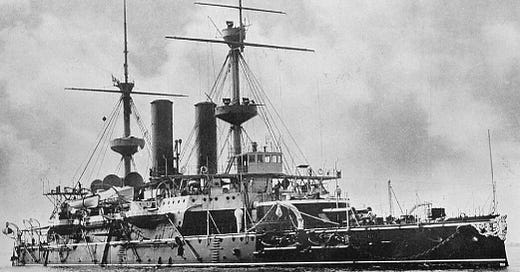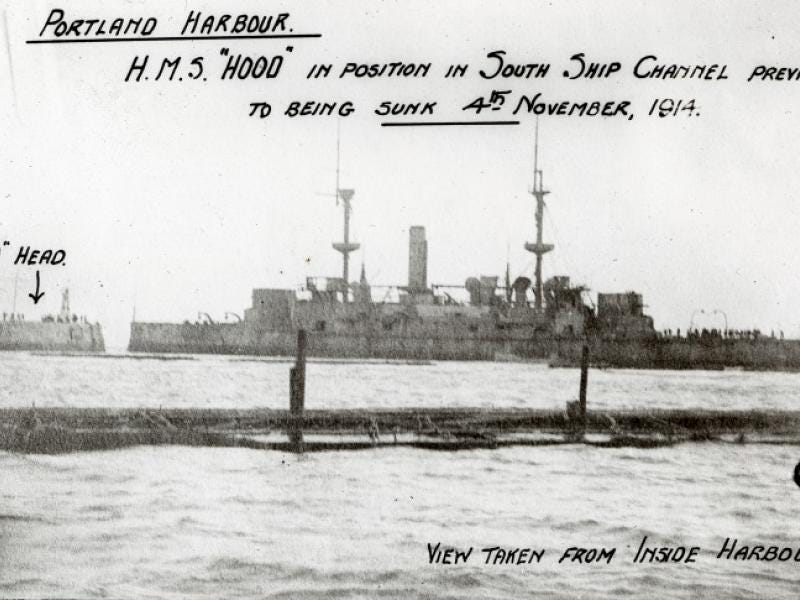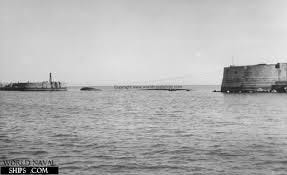There are several names that are somewhat legendary in the Royal Navy and history but like other Navies names are recycled to new ships and some have predecessors whose careers pale in comparriosn to them. Names like Victory, Warspite and of course Hood. You’d be surprised how many replies you get on Social media when you post a picture of the Royal Sovereign class battleship HMS Hood, stating that it was not the Hood.
This older Hood, which was built at Chatham and launched in 1891, is still visible on Google maps to this day and is also an interesting ship in herself.
The Royal Sovereign class battleship is often considered the first of the “Pre-Dreadnought” battleships (although there is debate about whether the Admiral Class count - this is a discussion for another time) and the Hood was the last of the eight warships. As such she was slightly different to her sisters in that her freeboard was reduced to eleven feet, a reduction of eight feet. It was one of the obsessions of ship design during the Victorian period with low freeboards being seen as ideal for making the ship harder to see and hit as well as meaning less armour being needed.
This obsession had culminated into the Captain affair and the Royal Sovereigns had increased their freeboard. The Hood would suffer from being very “wet” during bad weather and rough seas crashing down on to the prow and in hard seas her top speed would have to be reduced and so she would only be deployed to areas of relatively calm water such as the Mediterranean. The low freeboard also caused stability issues which were combatted by giving the ship a lower metacentre which made her gunnery less accurate. She would be the last battleship to have a low freeboard and you would think it an odd decission to lower it for the Hood.
Where as the rest of the Royal Sovereigns carried their main armament in barbettes the Hood was the first to carry armoured turrets which are much heavier but it meant the gunners were not as exposed to incoming fire. After Hood all battleships would have turrets although the turrets that were put into these future vessels were barbettes in armoured gunhouses.
Following her launch on the 12th August 1889 (Christened by Viscountess Hood) she was commissioned to the Mediterranean Fleet on 1st June 1893 after extensive sea trials but on her journey she suffered a leak in the forward compartments on the 7th due to faulty riveting. After a repair job at Sheerness dockyard she departed Kent again on the 18th June arriving at Malta on the 3rd July.
By 1896 Hood was in Crete protecting British interests as a civil dispute between Greek citizens rebelled against the Ottoman rulers. As part of the International Squadron the Hood bombarded insurgent forces, landed marines and formed a blockade which ultimately led to an end to the conflict and the Ottoman forces withdrew.
Hood would go on to relieve the Thunderer from its guardship role at Pembroke dock before going to the Mediterranean again where she damaged her rudder and was forced to return to Chatham using her screws to navigate. Although she would serve in the joint Mediterranean, Home and Channel fleet excercises in 1903 she did not go beyond home waters again and in 1911 she was listed for disposal and in July 1914 she was listed for sale but not before she was used in anti-torpedo bulge experiments at Portsmouth.
She was saved from the breakers yard though by the First World War.
Unlike her sister, Revenge, she would not be put ack into service but would carry out another vital War service. The Portland harbour’s second entrance was a vulnerable spot that any U-boat could use to their advantage and the best thing that could be done would be to block it. The old Hood was towed to the mouth of the southern ship channel on the 4th November and scuttled. Her wreck is still visisble to this day.







